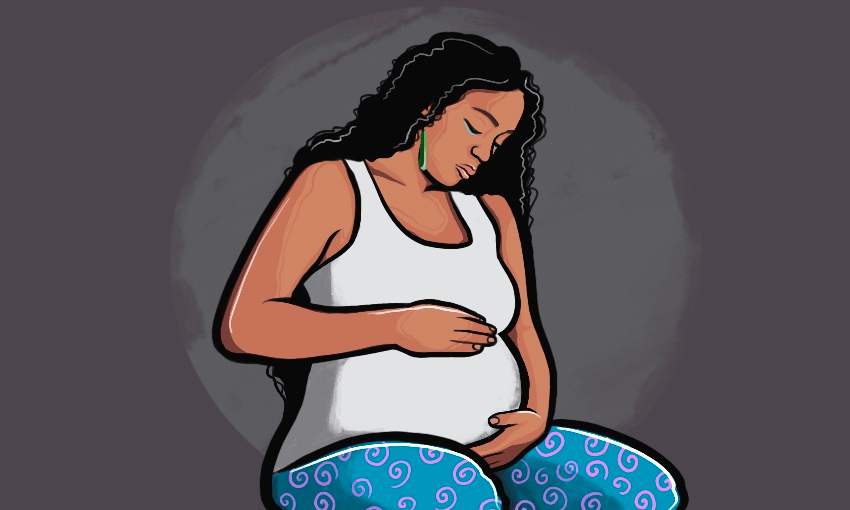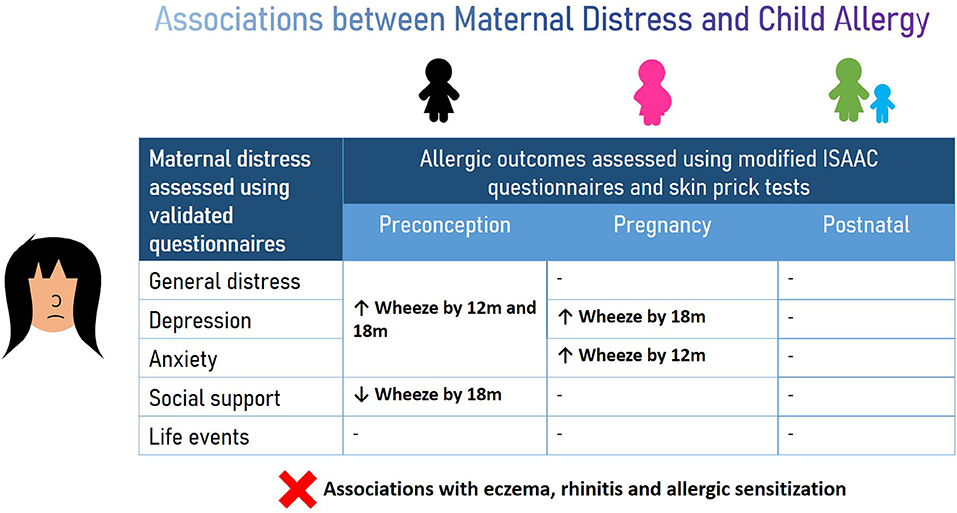Imagine the moment you’ve been waiting for, the culmination of months of anticipation and excitement – the arrival of your baby. But instead of experiencing the joy and wonder you envisioned, your labor takes a turn. You feel a sudden shift, a wave of panic, a fear that something isn’t right. This, my friend, could be maternal distress in labor. It’s an often overlooked aspect of childbirth, and understanding its signs and what to do can be empowering in such a vulnerable moment.

Image: thespinoff.co.nz
Maternal distress in labor is a complex experience encompassing a range of physical and emotional responses during childbirth. It’s not just about feeling overwhelmed; it’s about a profound sense of unease, a disconnect from your body, and a fear of losing control. For some, it manifests as a paralyzing anxiety, while others experience profound physical discomfort that hinders their ability to labor effectively. This article will delve into the complexities of maternal distress, empowering you with knowledge to navigate this challenging aspect of childbirth.
Understanding the Roots of Maternal Distress in Labor:
Maternal distress can stem from a multitude of factors, woven into the tapestry of a woman’s individual experience. It’s not simply a “one size fits all” issue; each woman’s journey is unique. Here are some key contributors:
1. Physiological Factors:
- Pain: Labor is inherently painful, and it can be physically demanding. When pain management isn’t effective or exceeds a woman’s coping capacity, it can escalate into distress.
- Hormonal Changes: The rollercoaster of hormones during labor is intense, with fluctuating levels of estrogen, progesterone, and endorphins. These fluctuations can trigger anxiety, fatigue, and even fear.
- Physical Exhaustion: Prolonged labor or interventions, such as epidurals or induction medications, can lead to physical exhaustion, decreasing a woman’s ability to cope with pain and sensations.
2. Psychological Factors:
- Fear and Anxiety: The fear of pain, potential complications, or the unknown can intensify as labor progresses, leading to psychological distress.
- Lack of Control: The loss of control over your body and experience during labor can be deeply unsettling. This is especially true if interventions like an epidural or forceps are necessary, further diminishing the sense of agency.
- Previous Traumas: Past experiences with difficult labors, medical procedures, or even childhood traumas can re-surface during labor, triggering emotional distress.

Image: www.frontiersin.org
3. Social and Environmental Factors:
- Lack of Support: A supportive partner, doula, or midwife can significantly ease anxiety and fear. However, if a woman lacks emotional support, it can exacerbate her distress.
- Unsupportive Medical Environment: A rushed or impersonal medical environment can heighten anxiety and lead to feelings of powerlessness.
- Cultural Influences: Societal expectations and cultural norms surrounding childbirth can also play a role in shaping a woman’s experience of labor.
Recognizing the Signs of Maternal Distress in Labor:
Identifying maternal distress early is crucial, as it can lead to a positive shift in care and outcomes. Here’s a guide to help you identify potential warning signs:
1. Physical Signs:
- Increased Heart Rate and Blood Pressure: Intense stress and fear can accelerate a woman’s heartbeat and elevate her blood pressure.
- Rapid Breathing: Hyperventilation, characterized by faster and shallower breathing, can be a sign of distress.
- Muscle Tension: The body’s natural response to stress is to tense muscles, leading to stiffness in the neck, shoulders, and back.
- Nausea and Vomiting: Anxiety and stress can trigger nausea and vomiting, especially when the body is already under physical strain.
- Shaking or Trembling: Uncontrollable shaking or trembling is a common physiological response to anxiety and fear.
- Changes in Pain Perception: Distress can amplify pain perception, making it more difficult to cope with contractions.
2. Emotional and Behavioral Signs:
- Increased Anxiety and Fear: Feelings of apprehension, worry, and dread regarding the labor process.
- Panic Attacks: Sudden episodes of intense fear, accompanied by shortness of breath, dizziness, and a pounding heart.
- Withdrawal and Isolation: A woman may become withdrawn, detaching herself from others and avoiding interaction.
- Inability to Relax and Focus: Difficulty relaxing between contractions, struggling to concentrate on the birthing process.
- Negative Self-Talk: Engaging in negative self-talk, doubting her ability to cope, or feeling like a failure.
- Increased Demands for Pain Relief: Constantly requesting more pain medication, which can indicate that existing methods are not providing sufficient relief.
Seeking Help and Support During Maternal Distress:
If you recognize any of these signs in yourself or someone you know in labor, it’s crucial to take action immediately:
- Communicate Your Needs: Tell your doctor, midwife, or nurse about your concerns, allowing them to assess the situation.
- Ask for Support: Seek reassurance and support from your partner, doula, or other trusted individuals.
- Consider Pain Management Options: Explore pain relief methods like epidurals, relaxation techniques, or water immersion.
- Explore Alternative Therapies: Consider aromatherapy, massage, or acupuncture, which can help alleviate anxiety and stress.
- Advocate for Yourself: Don’t be afraid to speak up for your needs and preferences. Trust your instincts, and don’t be afraid to ask questions.
Supporting the Woman in Labour:
If you’re a partner, family member, or friend supporting a woman in labor, here are practical tips:
- Be a Calm Presence: Stay calm and supportive, helping the laboring woman to feel safe and secure.
- Offer Physical Comfort: Provide massage, back rubs, or gentle touch to ease tension.
- Encourage Positive Self-Talk: Offer words of encouragement and remind her of her strength and ability.
- Respect Her Choices: Support her decisions regarding pain management and other interventions.
- Create a Favorable Environment: Dim the lights, play soothing music, and make the birthing space feel tranquil.
What Is Maternal Distress In Labour
Maternal Distress: A Shared Journey:
Maternal distress in labor isn’t a sign of weakness or failure. It’s a natural response to the intense physical and emotional demands of childbirth. By understanding the signs, seeking support, and advocating for yourself, you can work through this challenging experience and reclaim a sense of control during labor. Remember, this is a journey you don’t have to face alone.
Additional Resources:
- Your Doctor or Midwife: They are your primary resource for information and guidance.
- The American College of Obstetricians and Gynecologists: Visit their website for comprehensive information and resources on pregnancy and childbirth.
- Doulas: Doulas are trained professionals who provide continuous support during labor and birth. You can find certified doulas in your area through the Doula Association of North America.
Call to Action:
Have you experienced maternal distress in labor? Share your story with us and help other women understand this important aspect of childbirth.





